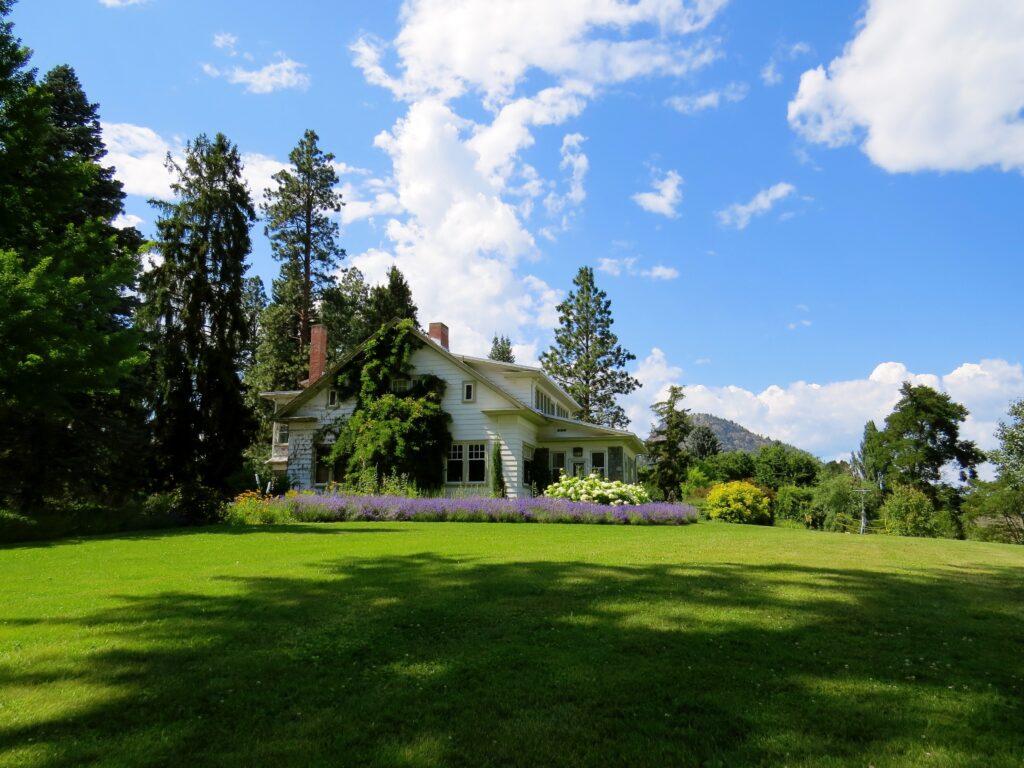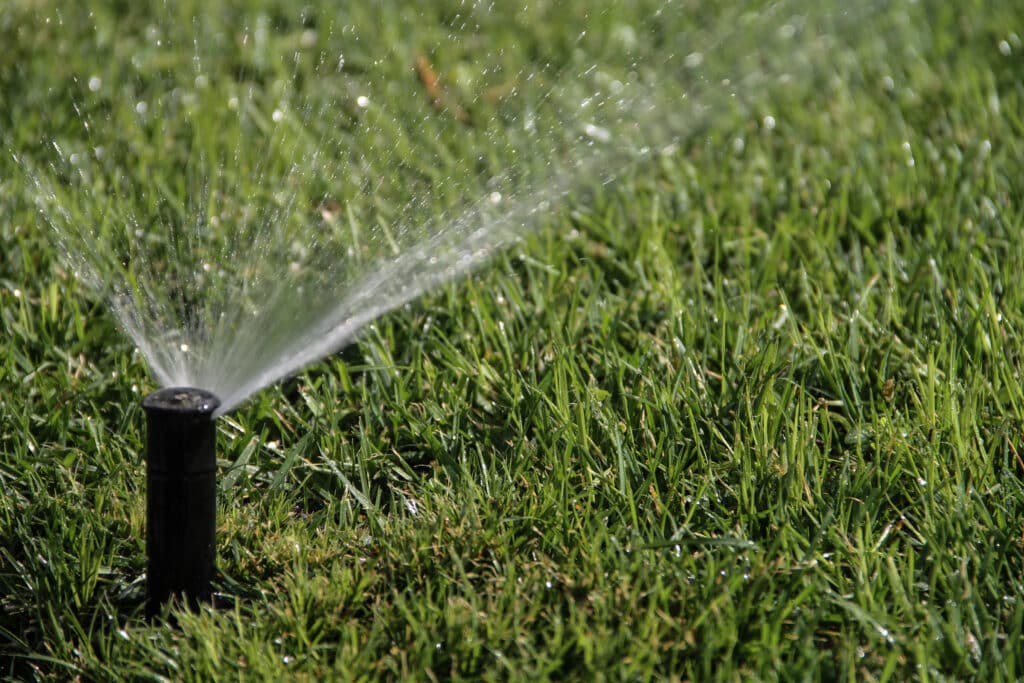Homeowners will do almost anything to have a thick, lush lawn.
This is even true for those who seem to care little about the surrounding landscape. They are emphatic about having a lush, green, well-manicured lawn that stands proud. It’s the one landscape element that everyone understands.
Lush Lawns Make The Landscape
The truth is even the best landscapes appear average if the green space that frames them does not look its best year round. Experts agree it’s easy to have a lush green lawn in the springtime when conditions are ideal. But what about the mid-summer days when you are most likely to host guests?
What follows are the five best expert tips for keeping your lawn looking its best. They will give it a timely boost and maximize its potential for years to come. Most importantly, be prepared for a few surprises that will save you time and money.
#1. Topdress With Fresh Soil
If there is one tip that never fails, it’s giving your lawn a rejuvenating blanket of fresh topsoil. The rich organic matter feeds turfgrass in ways that only Mother Nature can. More than natural fertilizer, topsoil contains microorganisms that work tirelessly to create a symbiotic environment for the soil, root system and associated elements, including air and water, to work together as one.
Many lawns are depleted of organic matter. This is largely due to a few activities, with chemical fertilizer and weed control applications being one of the leading sources. Foot traffic from everyday activities is also a contributor. Tired soils are inevitable, and that’s what makes this uncommon lawn care treatment such a valuable practice.
Depending on the size of your lawn, you may wish to hire a landscape company to perform this service for you. You could also break it down into smaller projects, such as the front yard one season and the back the following year.
If especially problematic turf areas are involved, such as parkways that experience lots of traffic, consider replacing the troublesome grass with fresh sod. You can hire this out or rent a sod cutter and have the fresh sod delivered. The secret is fresh sod contains enough rich soil that you do not even need to add new topsoil.
#2. Alternate Mowing Patterns
It doesn’t matter if the mower is small or large, it will impact both the turfgrass it cuts and the soil that supports its growth. If the mowing pattern is the same every week, ruts will begin to form. They may not be noticeable, but they nevertheless affect the health of the lawn.
When you alternate mowing patterns, you are giving the soil and blades of grass the opportunity to heal. The soil will loosen and the bending of the blades of grass in a new direction will allow light and moisture to enter the root system more freely.
The most common approach to mowing patterns is alternating a sequence from vertical, horizontal, and left and right diagonals. These four mowing patterns nicely fit the four weeks of every month. You’ll only have to determine how you handle that extra week every few months.
#3. Leave The Clippings And Leaves
When you leave grass clippings to work their way back into the soil, you are returning organic matter and needed moisture. Not only that, the clippings serve as a mulch that retains moisture already in the soil. Grass clippings are rich in nitrogen and potassium, both necessary elements for lush, green grass.
As a complement to this, try to mulch at least some fallen autumn leaves back into the soil. Now you are returning carbon to the soil. It’s a valuable energy source for microbial growth that breaks down organic matter to make it available for turf and other plantings.
It’s interesting to note the future of lawn mowing is robotic mowers, and all the current brands dispose of grass clippings by micro-cutting, making them practically invisible.
#4. Manage The Irrigation Schedule
Water is a valuable resource that should be carefully managed. Odds are you are paying for it too if your home is located within an urban or suburban community. That alone should be enough to motivate people to manage their use of irrigated water. As water resources across the United States are further depleted, it stands to reason that the price of water will increase to discourage wasting it.
One of the most frustrating experiences for lawn and landscape experts is witnessing irrigation systems operating during or immediately after a storm. Storms produce plentiful nitrogen in a natural form. You will notice its greening effect almost immediately, and its benefit is sustainable too. Knowing this, you would think property owners would go to great lengths to avoid washing this benefit away with irrigated water.
Too much water also limits every plant’s ability to access oxygen from the air. Oxygen is a necessary part of the photosynthesis process, and without it, plants will rapidly decline and eventually die. This is true even for the toughest varieties of turfgrass.
#5. Aerate And Overseed In Autumn
Most homeowners are familiar with core aeration. It’s a practice best performed in early autumn here in Minnesota. In fact, most golf courses perform core aeration during the second week of September without exception. This gives the root system the opportunity to benefit from the mechanical process of breaking up the root systems and returning that organic matter back to the soil.
One of the little known lawn care secrets is overseeding the property immediately after core aeration. This grass seed will fall into the loosened soil where it will soon be protected as cores of soil work their way back into the lawn. The new grass seedlings will help to rejuvenate barren turf areas.
More importantly, overseeding after aeration is a valuable practice for introducing newer turfgrass cultivars that are improved, and possibly more resistant to common diseases. You can also introduce new turf varieties to a lawn to manage other conditions, such as drought tolerance.
Any of these five expert lawn care tips will give you a more lush and healthier lawn. Some require greater effort or cost, but they all promise results. Combining several of these tips will most likely give you the best results.
Architectural Landscape Design: Helping Homeowners Enjoy Better Living
Here at ALD, our top priority is creating living spaces that are right for you. Our landscape design team will work with you from concept to construction to create the right landscape for your personal needs. Contact us today for a free consultation to explore your next outdoor living project.


